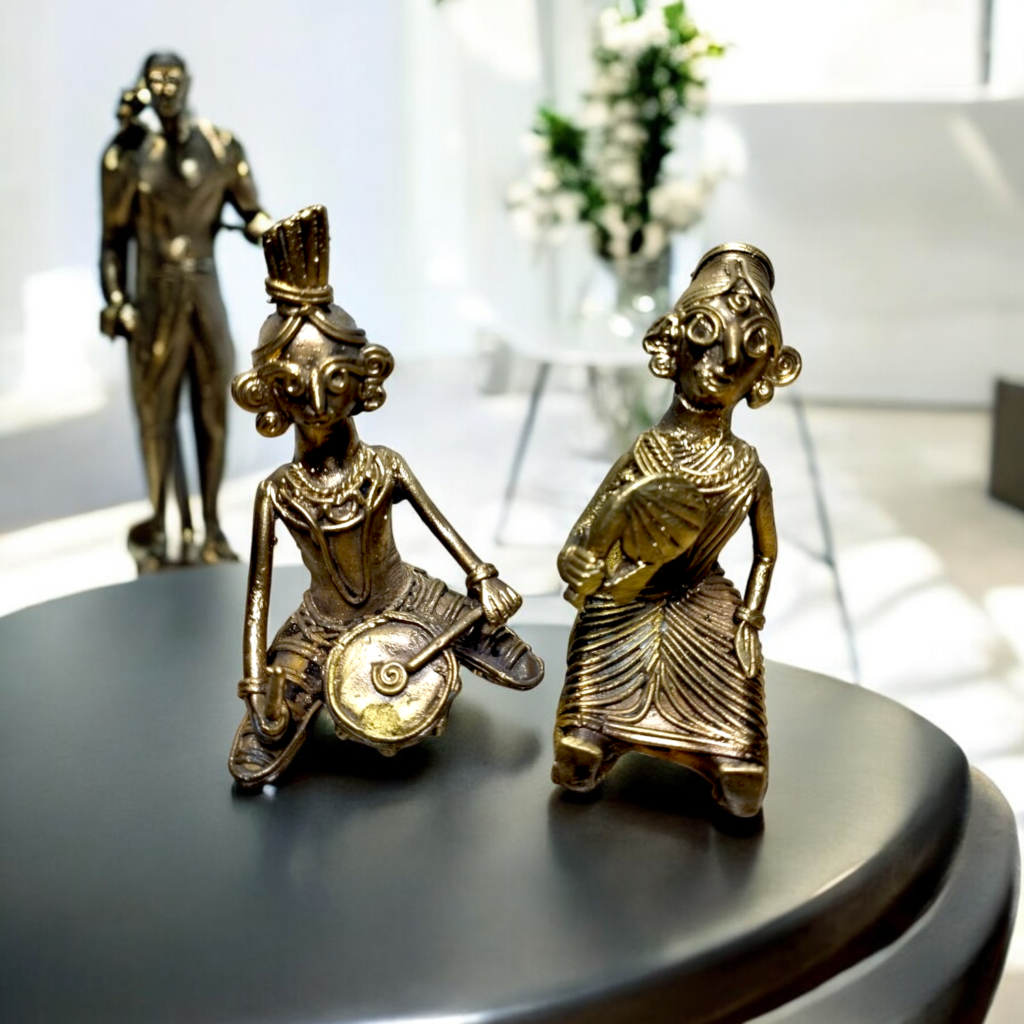Traditional Dokra Art
History of Dokra Art (Lost-wax casting)
- Ancient Roots: Dokra art can be traced back over 4,000 years, with its origins linked to the Indus Valley Civilization. The famous “Dancing Girl” sculpture is evidence of similar metal casting techniques has been found in Mohenjo-Daro and Harappa.
- Spread and Evolution: Over centuries, the technique spread across various parts of India, particularly in the states of West Bengal, Odisha, Jharkhand, and Chhattisgarh. The craft has been practiced by the Dokra Damar tribes, an ethnic group of metalworkers.
- Cultural Significance: Dokra art is deeply intertwined with the rituals, traditions and daily lives of the tribal communities. The artisans create sculptures of deities, animals and nature-inspired motifs. These figures are often used in religious ceremonies and as household items.
Modern Revival and Popularity
Dokra art remains a vibrant symbol of India’s rich cultural heritage. It continues to thrive, adapting to modernization while preserving its traditional essence. Dokra not only sustains the livelihoods of many artisans but also keeps alive the ancient techniques and stories passed down through generations. In recent decades, Dokra art has seen a revival, gaining national & international recognition through efforts by artisans, NGOs and the government.










